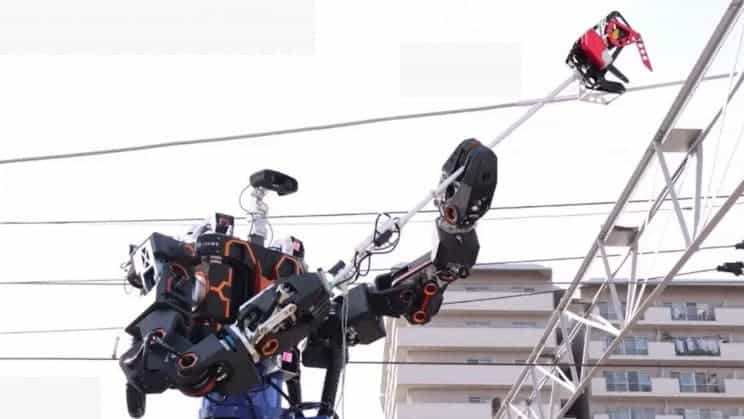In the West of Japan’s Honshu Island, Gundam-style robots are at large across the railways.

But this is not the invasion screenwriters have been plying us with in robot uprising movies; far from it. These humanoid robots are meant to safeguard human life by taking on dangerous, life-threatening jobs so that workers don’t have to. And, despite their impressive bulk, they are not autonomous: they are completely dependent on commands from their operator, without which they would be completely unreactive.
Owned and operated by the West Japan Railway Company (JR-West), these machines are an exciting step forward in the field of service robotics. So far, they have been employed for repairs along power lines and for heavy maintenance tasks that they take off the hands of human workers “to improve productivity and safety” in a country plagued by labor shortages, according to the company.
Big bots
Although officially still in development and not expected to enter the workforce before 2024, the robots already are an impressive sight to behold. Each consists of a humanoid torso, complete with arms, mounted upon a hydraulic — arm not dissimilar to one you’d see on a crane — mounted on a crane railcar.
Each bot sees the world around it through a camera mounted in place of its head. Video footage recorded through this camera is then fed to the cockpit below, into the pilot’s VR set. In return, he controls the robot’s motions. The input mechanisms this pilot has at their disposal are especially exciting. These transmit information both ways — they command the robot to move, but also transmit a sense of weight, resistance, and other sensations back from the robot’s arms. For example, while motions on the controls will make the robot move its arms, an external force moving the robot’s arm would also push on the control stick that the pilot is holding.
So far, each robot can lift up to 88 pounds (40 kgs) of weight and can rise up to 32 ft (9.7 meters) on their hydraulic crane arms. They are earmarked to perform potentially-dangerous but routine maintenance jobs, such as checking the wires above train cars and other electrical jobs.
In the future, the company wants to increase mechanization for other dangerous tasks, such as maintenance work in hard-to-reach or dangerous areas including cliffs, slopes, or areas near powerful electric currents. Its aim is to reduce the amount of human staff working in such conditions by 30%.
The railway, which is headquartered in Osaka and operates an extensive network across western Honshu, has been mechanizing routine maintenance jobs that pose a risk to workers, such as checking the wires above train cars and other electrical jobs.
So far, a single prototype of the robot, developed by Nippon Signal company and Human Machinery Company, has been built. Judging from how it performed during testing by JR-West, and the company’s desire to have several such robots in their maintenance fleet in a few short years, however, we can definitely say that this prototype was very successful. The work being done here will undoubtedly make companies and institutions in other fields of work more interested in developing similar robots and will advance our understanding of how to do so.
In other words, we’re one step closer to having massive, humanoid robots working alongside us. Awesome!






